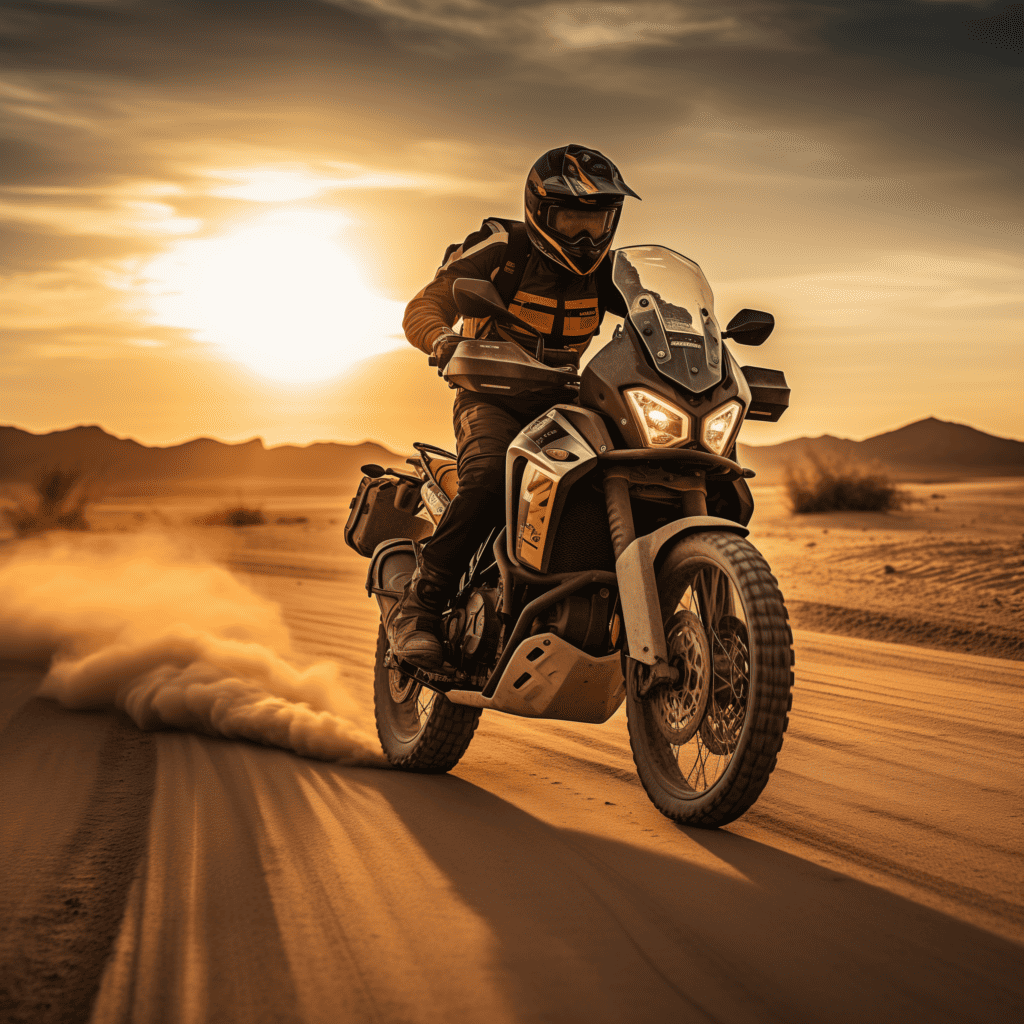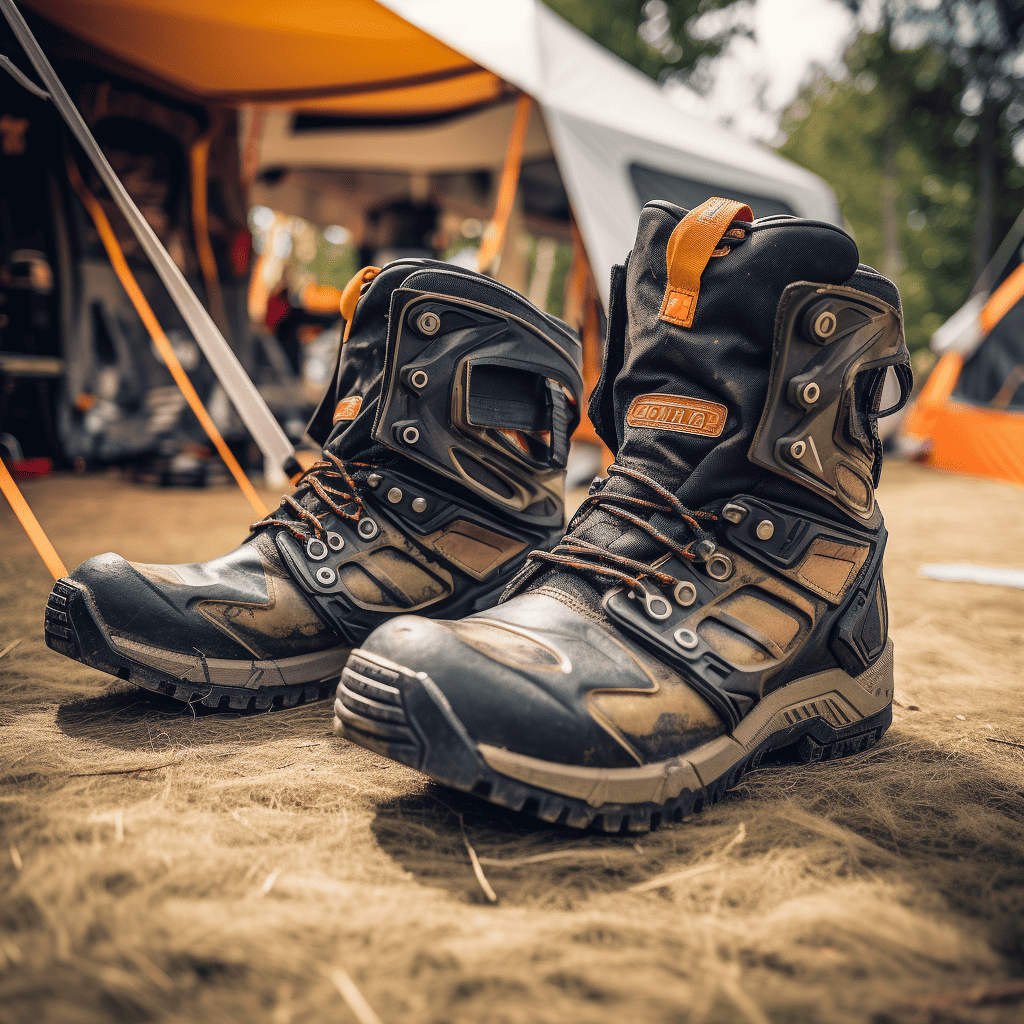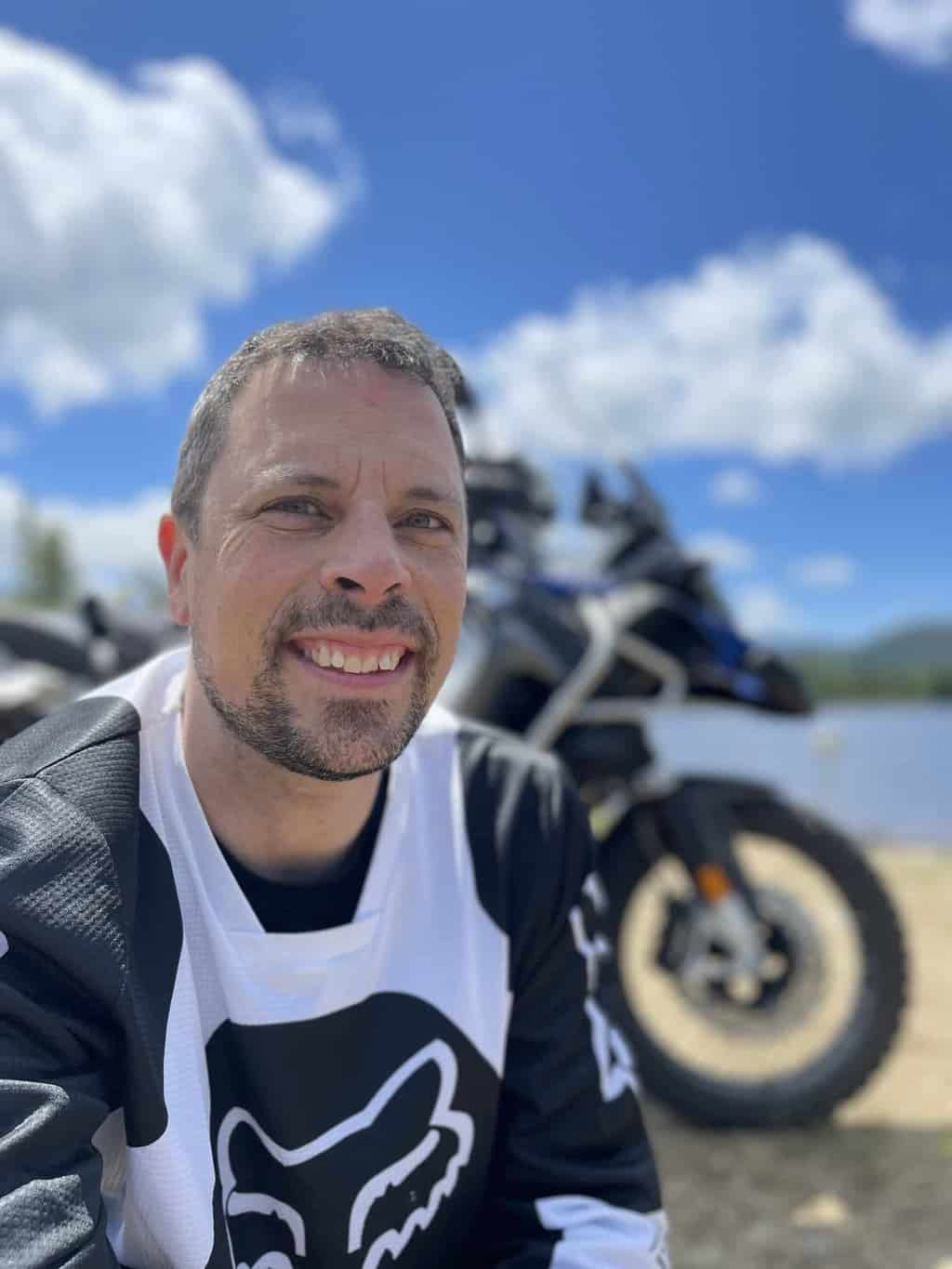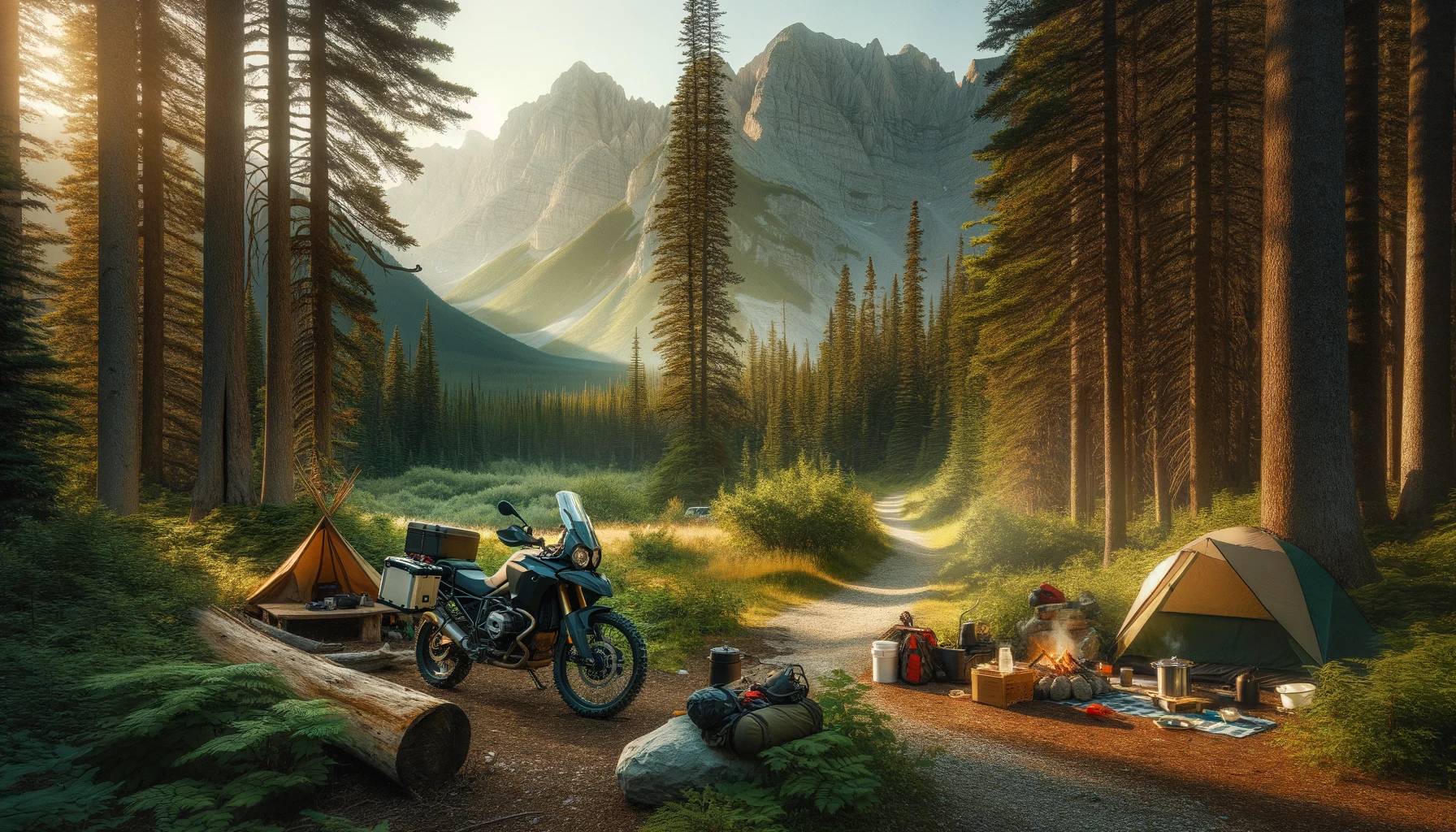A motorcycle camping adventure promises an exhilarating blend of freedom, nature, and the open road. However, the key to maximizing your enjoyment lies in packing smart – especially when choosing the proper clothing and efficiently utilizing limited space. This page delves into essential clothing tips strategies to ensure your motorcycle camping experience is comfortable and memorable.
You can find a quick list here: Quick list for moto camping clothing
Table of Contents
Essential Clothing for Motorcycle Camping
- Layering is Key: Discuss the importance of layering, starting with moisture-wicking base layers, insulating middle layers, and a waterproof outer layer.
- Protective Gear: Highlight the necessity of proper helmets, gloves, and armored jackets and pants for safety.
- Footwear: Explain the need for sturdy, waterproof, and comfortable boots.
- Versatility and Durability: Emphasize choosing versatile clothing for various weather conditions and durable enough for outdoor activities.
Layering is key
The only concept that you need to learn is the concept of layering. If you already are someone that enjoy the outdoors maybe you already know about it. Layering is the way you put layer of clothes on your body to protect it against the elements, bring moisture out and keep heat in. When I write about layers I ALWAYS mean for your upper and lower body (Shirt and pants).
In motorcycle we are use to protect ourself against the wind, the rain and the grinding of a fall on asphalt. But this is only your outer layer, there are at least two other layer that you can use.
Base layer
The first layer is often called the moisture-wicking base. The primary purpose of this base is to transfer moisture from your skin out to the fabric and provide a first layer of insulation. The base layer is particularly important if you experience a lot of temperature variation throughout the day. For example, If you plan to sweat and then face a colder temperature, this layer is very important.
Usually, this layer is made of technical fabric and must fit tightly on your body. All companies are developing their own “sauce” of technical fabric, but they are almost equal. The Important factor to consider is moisture management, and you should also pay attention to choose the seem as low as possible.
You should plan for a different base layer for every two days of riding.
Mid layer
The role of the mi layer is to move moisture from the base layer away from your body and trap body heat. You will not always need a mid-layer when driving in the hot summer, but it’s often used at night around the fireside or at the beginning or the end of the motorcycle season.
The mid layer should be snug on your base layer but allow free movement. They also should be air permeable to allow the moist air to escape your body. Usually, they are made of low-profile insulating material or fleece. I prefer the first because they weigh less and they pack better.
Outer layer
The outer layer protects you against the environment: Rain, wind, and asphalt. In the backpacking community, you will hear the term “Shell.” Because you are riding a motorcycle, you must bring two outer layers: one to protect you at the camping site and one to protect you when you ride.
Outer layer at camp site
This layer will protect you from rain and wind or the cold at camp. What I like to bring is just a shell, preferably in Goretex or similar material. They are lightweight and can be packed easily. They are very good at protecting against rain and wind. I prefer one with a hood because it’s another protection against the cold and the rain.
I often hear people say that those are too expensive, but remember that you can use them at home too. Those technical shells can last a very long time. I paid over 400$ for my last one and have kept it for ten years.
So that you know, I’m pretty hard on stuff (My mother would say, destructive). I used it without reservation when I was a hunter guide for two years. It has been covered in blood, sweat and woodchip.
Do not bring those coats too close to the fire, as sparks will make holes in them in milliseconds.

Outer layer for motorcycle
This outer layer, you’re supposed to be more used to it. It’s your standard riding gear. Usually, adventure motorcycle riding gear is recommended because it’s oriented to a harsh environment and has all the protection needed for motorcycle riding. I recommend choosing a coat that has back, elbow and shoulder protection.
Your pants, you should have at least knee pads, preferably hip pads too. All the fabric should be in material that resists abrasion. I prefer pants that can attach over my riding boots. If you have waterproof riding boots, they will get full of water in no time if you have your pants tucked in.
If you opt for a Goretex layer on your outer layer at camp, you don’t need it to be waterproof because you can put your Goretex layer underneath your riding kit.
If you are riding a lot off-road and use knee braces, chest guard and elbow protection, enduro gear can be a good option. They are less resistant to asphalt abrasion, but they are less bulky and provide excellent freedom of movement.
In this outer layer, you can add a good pair of riding gloves. Select a pair that is waterproof and adapted to the temperature you will ride in.
Footwear
Again, in this section, you must plan for riding and camping. I use enduro or motocross boots for riding and use running shoe at camp, but you can choose what best suits you.

Footwear for motorcycle
If you plan to do a lot of off-road, I urge you to use motocross boots. Only if you stay on asphalt all the time would I recommend adventure riding boots. Let’s just forget riding shoes for moto-camping, they do not offer enough protection against the environment.
So, for off-road riders, I recommend motocross boots or enduro boots. They offer way more protection and provide good support for riding in the standing position. Don’t worry, you will be slightly clumsy with the controls at first, but quickly get the hang of it. Pay particular attention to the sole. Some motorcycle boot doesn’t have any pattern on the sole, and they are made for motocross only, try to select one that offers grip.
You can select both waterproof or non waterproof motocross boot, I never know what is best. The problem with waterproof boiot is that tey keep water out and also in. If you have a water crossing, they will keep water in for a very long time if you fall. On the other hand, if it’s raining a lot and you don’t have waterproof boots, you will have wet feet also. I lean over the non-waterproof just because I’m cheap and I do aggressive off-road riding.
For asphalt adventurers, I definitely recommend waterproof adventure motorcycle boots. You need a bit less protection, and the chances you encounter water to the knee on a road are slim to none. Select a pair of boots with a strong and good sole. I have seen waterproof riding boots with a flat sole, it’s probably the best way to drop your motorcycle as soon as there is sand or gravel under your foot.
Footware for the camp
As I said before, I like to have running shoes at camp. If you want to save space you can have a pair of flip-flops in. h tead. The important here is to remember that you will wear them to walk around at night. I don’t like to feel wet and cold grass on my feet and also don’t like to be bitten by bugs so I’m better in running shoe.
If you camp in a campsite where they have a shower, maybe you will like to have a pair of flip-flops to protect your feet while showering.
Camp clothes
Now that we have our riding gear out of the way, we can focus on spare clothes, underwear and socks.
Socks and underwear
For the socks, I plan for one base layer socks every day and one riding socks for every two days of riding. This is because I use a base layer on socks too. I use one very thin sock directly on my feet under my riding socks.
This is mainly to protect me against blisters. If you have two layer of socks, the first layer will rub against the second layer when you move. If you only use one pair, it’s your skin that rub against the sock and we all know what happens next.
For the camp, I plan for one pair every three days of camping.
Since underwear are pretty crucial, I plan to replace them every day. Maybe I will even be “commando” at camp. Hey, nobody is perfect.
Spare clothes
Spare clothes can include shorts, sweatpants or jeans. I usually plan for one pair of shorts for the trip and one pair of jeans or sweatpants.
I love to bring my favourite hoodie for campfire night. I usually plan for one T-shirt every three days since I often keep my base layer shirt at camp.
I always bring a baseball cap because we are not always at our best when the helmet goes off after a complete day of riding.
Emergency clothes bag
This is a secret of mine, but if you are still reading, I can share it with you. I have a special small bag of emergency clothes that is always on my motorcycle. In this bags I have a clean pair of hot riding socks, a baklava, a pair of old riding gloves for cold weather and a small rain coat and rain pants.
If you like to be the hero, this is the perfect kit to bring. There is always someone that is not dressed correctly for the weather and having this gear with you gives you the occasion to help a fellow rider. It can also be you who did not plan correctly and you will be glad to have this spare kit, I have used it on more occasions than I would like to count.
With the right clothing choices and smart packing strategies, motorcycle camping can become an enjoyable and hassle-free adventure. Remember, the key is to Layer correctly, pack smart, and be prepared for the unexpected. Now gear up, and hit the road for your next two-wheeled adventure!
For more information on moto camping check this page: The Freewheeling Camper’s Guide: Mastering the Art of Motocamping

Meet Simon, the 46-year-old aficionado behind YourMotoBro. With a lifelong passion ignited by motocross dreams and a Canadian Tire bicycle, Simon’s journey has been nothing short of extraordinary. From coaching underwater hockey to mastering muddy terrains, he’s an authority in thrill and adventure. Certified as an Off-Road Vehicle Excursion Guide and trained in Wilderness First Aid, Simon’s love for bikes is as diverse as his collection—from a robust BMW GSA R1200 to the memories of a Harley Davidson Night Train. By day a respected telephony consultant, by night a motorcycle maestro, Simon’s tales are a blend of expertise, resilience, and undying passion. ?️✨
